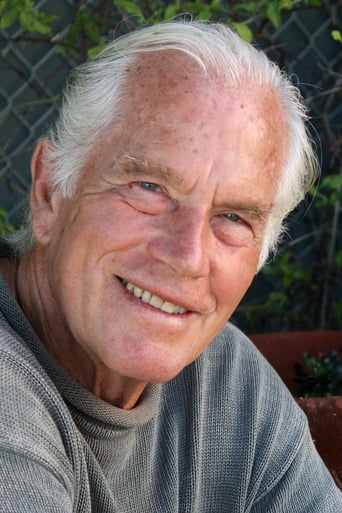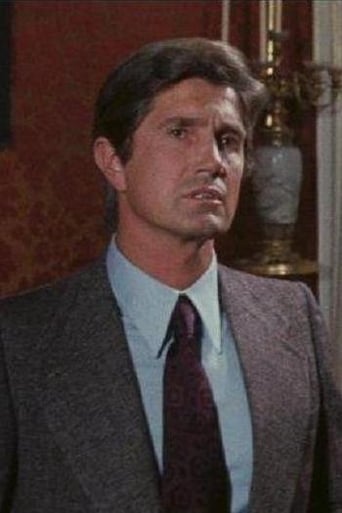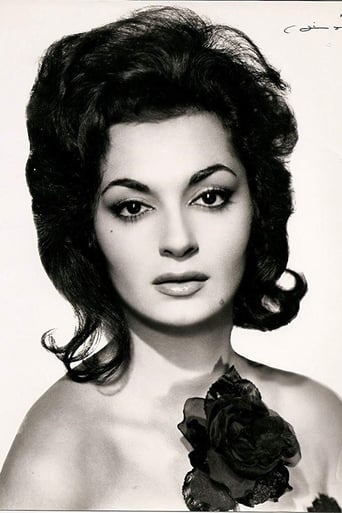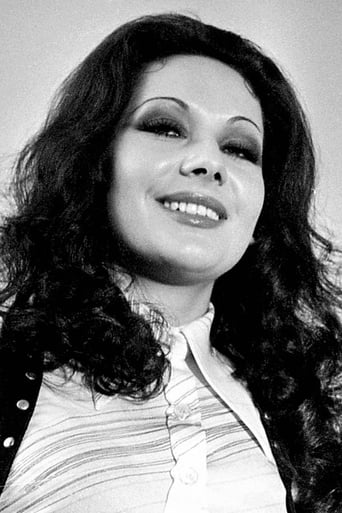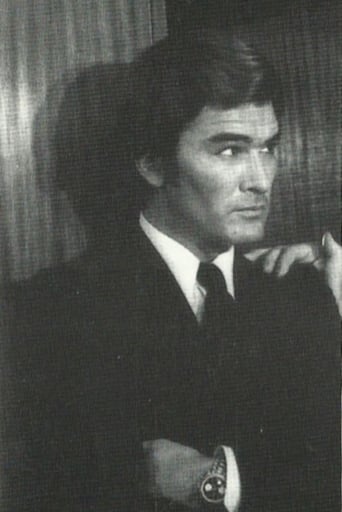Alicia
I love this movie so much
FeistyUpper
If you don't like this, we can't be friends.
Dirtylogy
It's funny, it's tense, it features two great performances from two actors and the director expertly creates a web of odd tension where you actually don't know what is happening for the majority of the run time.
Nicole
I enjoyed watching this film and would recommend other to give it a try , (as I am) but this movie, although enjoyable to watch due to the better than average acting fails to add anything new to its storyline that is all too familiar to these types of movies.
Leofwine_draca
GUNFIGHT AT RED SANDS is a good-natured spaghetti western, made just one year before Sergio Leone's A FISTFUL OF DOLLARS helped to define the genre as we know it today. As such, GUNFIGHT is more in line with the kind of Hollywood westerns that were produced in the 1950s, such as HIGH NOON: it's neither as gritty nor as dark and violent as many of the spaghetti westerns made in the late '60s. Nevertheless, I'd recommend it as a film definitely worth a watch, because it has much going for it – not least another effective leading man performance from peplum actor Richard Harrison. Harrison, who made his name in equal numbers of westerns and historical adventures, is as tough and ready as he ever was on screen. He's no Eastwood, but he does a good job.My biggest complaint with this movie is the score by Ennio Morricone. This guy is one of my favourite composers, thanks to his iconic work on Leone's DOLLARS trilogy, but his music here sounds twee and dated, as if it came from some '30s melodrama than a '60s western. It seems he's constrained here by the producers, and the lack of experimentation hurts the movie a lot. Still, it's not all bad. The screenplay by future trash director Albert Band breathes life into old genre staples – i.e. the adopted son, the corrupt lawman, the criminal gang, the fiery love interests – and the action is well-handled, with plenty of nicely-choreographed brawls, shoot-outs, and gun battles. The chief villain role goes to Giacomo Rossi-Stuart and he fits it like a glove; I never did like this actor when I saw him playing the 'good guy', much preferring him as a slimy creep. Mikaela and Sara Lezana play opposing love interests, the former fiery while the latter sweet, although astonishingly I read somewhere that Lezana was born in 1948, which made her only 15 when she appeared in this film, kissing and frolicking with Harrison – surely an error?
ma-cortes
An avenging stranger (Richard Harrison) seeks vengeance against killers who have murdered his father . He guns down a gang of ruthless outlaws in revenge for the murder of his family . He returns a little town called Carterville where rules steadily a sheriff (Giacomo Rossi Stuart) and a Saloon owner (Barta Barri) . At the saloon the starring meets his old flame (Mikaela) .This Chorizo Western packs violence , shootouts , high body-count and it's fast moving and quite entertaining . There is plenty of action in the movie , guaranteeing some shoot'em up or stunts every few minutes . It contains bits of campy and refreshing events with turns and twists . It's an exciting western with breathtaking showdown between the starring Richard Harrison and his enemies . Outdoor sequences shot on outskirts of Madrid , La Pedriza , Colmenar Viejo , and Hoyo De Manzanares . The producer Jose Maesso ordered to build a Western village called ¨Golden City¨ where were shot a lot of Western . Being built by Cubero and Jose Luis Galicia in charge of production sets and subsequently designed numerous Westerns . One year later , most technicians , secondary actors (Aldo Sambrell , Daniel Martin), Production ( Jolly , Constantin Film) , cameraman (Maximo Dallamano) , musician (Ennio Morricone or Dan Savio) would work in the notorious ¨For a fistful of dollars¨ that created Spaghetti. Even the main role was offered to Richard Harrison , but he turned down and explaining : Maybe my greatest contribution to cinema was not doing Fistful of Dollars, and recommending Clint Eastwood for the part.The picture is well starred by Richard Harrison , he is top notch as the brave hero who finds many dangerous situations while attempting to avenge his family and protect his true love played by Sara Lezana . Strong and robust Richard Harrison was a magnificent muscle-man . He was one along with Ed Fury, Brad Harris, Kirk Morris, Reg Park, Mark Forest, among others, whom to seek fortune acting absurdly muscle mythological figures, but anybody topped Steve Reeves and Gordon Scott in popularity. Harrison played in Hollywood some minor roles as ¨Kronos ¨ and ¨South Pacific¨ , while shooting another inferior character in ¨Master of world (1961)¨ produced by American International , he met producer James H. Nicholson's daughter and married her within six months. Frustrated at not being able to secure meatier roles in America , Harrison jumped at the chance when offered the first character in 1961 ,¨The Invincible Gladiator¨ , which was filming in Europe along with his greatest success ¨The seven Spartans¨. He wound up settling in Italy for the next two decades. His lead role, of course, immediately typed him as another Herculean type and, to avoid being penned in too much as a muscle man, he sought characters in routine spaghetti westerns as ¨Texas the red , Gringo, Reverendo Colt, Joe Dakota ¨ , Wartime genre as ¨Leopards of Churchill and 36 hours in hell¨ and spy intrigue as ¨Master stroke and 077 challenge to the killer's¨ . Once Italy closed down film production after the muscular craze had died down, he, like others, found himself unemployed. He did manage to scrape up work in Hong Kong, but a large portion of them were bottom-of-the-barrel Ninja movies.Screenplay with interesting premise about a gunfighter seeking justice was written by Albert Band and the same director Ricardo Blasco. The producer Jose G . Maesso with his Cia. ¨Tecisa¨ produced several Western as ¨The ugly ones , Minnesota Clay , Django , A train to Durango , Hellbenders¨ and financed various pre-Leone Western as ¨Tierra Brutal¨ and along with those Western directed by Joaquin Romero Marchent as ¨Three Implacables¨ , ¨The shadow of Zorro¨ created the birth of European Western , before Leone-boom .
FightingWesterner
Richard Harrison is a gringo raised by a family of poor Mexican farmers, who have recently discovered gold on their property. He returns home from a war in Mexico to find his father shot down by three strangers looking to take his treasure, leading to a showdown with several local bigots and friction with the town's new sheriff.Although definitely not the first western shot in southern Spain nor the first Italian-made western, this may have been the first real "spaghetti western" (albeit with American co-writer Albert Band), by Jolley Film of Rome, the studio that made A Fistful Of Dollars the following year.Some say that El Sabor de la Venganza, released the same year, came before. However, I'm not entirely convinced, as this is the one that's acknowledged as the film debut of Spanish genre star Aldo Sambrell, an actor who appeared in both films.Harrison, better known for starring in a slew of Italian sword and sandal features, is pretty good playing the sullen, lone-avenger type in this typical but entertaining flick, that benefits greatly from a fast-pace, good action, and gun-play.This is also notable for being the first western film scored by the great Ennio Morricone. It's not his best, but there's a few good moments, including the catchy main-theme "A Gringo Like Me", featuring a truly odd vocal performance that was changed and made more mainstream for it's CD appearances!
zardoz-13
Muscle-bound peplum star Richard Harrison dons a Stetson and buckles on spurs and six-shooters in Spanish director Ricardo Blasco's "Gunfight at Red Sands," one of the earliest examples of Continental westerns before Sergio Leone's "A Fistful of Dollars" kick-started Spaghetti westerns. Some of the people behind the scenes on this oater later on figured prominently in the Leone westerns, principally composer Ennio Morricone using the pseudonym 'Dan Savio,' "Fistful of Dollars" lenser Massimo Dallamano as 'Jack Dalmas,' veteran Euro-western bad guy Aldo Sambrell of "Navajo Joe," and another "Fistful of Dollars" actor Jose Calvo who owned the saloon between the Rojos and the Baxters in the Leone classic. Morricone cut his teeth on Euro-westerns with this Spanish-produced sagebrusher and the title tune that he composed with lyricist Dicky Jones could easily qualify as the anthem for spaghetti westerns, with lyrics like "Keep your hand on your gun/Don't you trust anyone/There's only one man you can trust/That's a dead man or a Gringo like me." Altogether, "Gunfight at Red Sands" ranks as a pretty fair facsimile of the American variety with heaps of hard-riding, fast-shooting action set against rugged desert scenery and a well-laid out western town.Richard Harrison, who made several spaghetti westerns, such as "Gunfight at High Noon" (1963), "One Hundred Thousand Dollars for Ringo" (1965), "El Rojo" (1967), and "Between God, the Devil, and a Winchester" (1968), was just at home on the range as a western hero as he was in the peplum genre as a strongman. The character that he plays in "Gunfight at Red Sands" is the 'Gringo' referred to in Ennio Morricone's song. Before Gringo makes his appearance, scenarist Albert Band—who helmed a couple of spaghettis himself, "The Tramplers" (1966) and "The Hellbenders" (1967)—and writer/director Blasco lay the ground work for the action. Manuel (Giacomo Rossi-Stuart) rides into Red Sands to drink and gamble, but he drinks too much and loses everything, including a pouch of gold. During his gambling spree, he mentions that his father, sister, and he have found more than enough gold to buy the saloon. Later, three masked gunslingers surprise his dad at home, shoot him in cold blood, and steal several bags of gold from a compartment in the floor. Meantime, Ricardo (Richard Harrison) has spent the last four years fighting alongside the revolutionaries in their desperate bid to rid their country of the oppressive political regime that makes their lives so miserable. White-clad soldiers by the dozens have Pedro (Jose Calvo) and Gringo on the run. In fact, Gringo barely escapes with his life after Pedro and they splash across the Rio Grande back into Texas, but one of the troops fires a last shot and kills poor Pedro. Sickened by all this bloodshed, Gringo decides to settle down and live a peaceable life. His illusions are shattered when he rides home to find his father dead on the floor of their ranch. When Gringo launches his own investigation, he clashes with the local lawman who displays his bigotry for all things Hispanic as do several of the townspeople. Later, inquisitive Manuel discovers that Maria, a saloon hostess, has been keeping their stolen gold stashed in their safe. Manuel kills the saloon owner, escapes with the gold and a posse pursues him to the ranch. Gringo sends Manuel packing before the posse arrives. When they show up, Gringo proves that the stolen gold belonged to his father. An anti-Mexican deputy gets in a brawl with Gringo and our hero kills him in front of witnesses, providing the sheriff with a legitimate reason to lock him up."Gunfight at Red Sands" has several surprises and plot twists during its lean 95 minute running time. The intolerance shown toward Mexicans qualifies it as a message movie of sorts and the hero is an American who had been adopted by Mexicans and raised as one of the family. No, there are no racial epithets, but one laughing cowboy distinguishes Mexicans by their stench until Gringo roughs him up during a saloon brawl. Morricone's flavorful scores enhances the excitement and heightens the drama throughout. The dubbing appears to be rather well-done, considering that this is a Euro-western, and the performances throughout are good, too. Unfortunately, the only prints available of this landmark western are horrible public domain prints, but it is still an entertaining saga.

